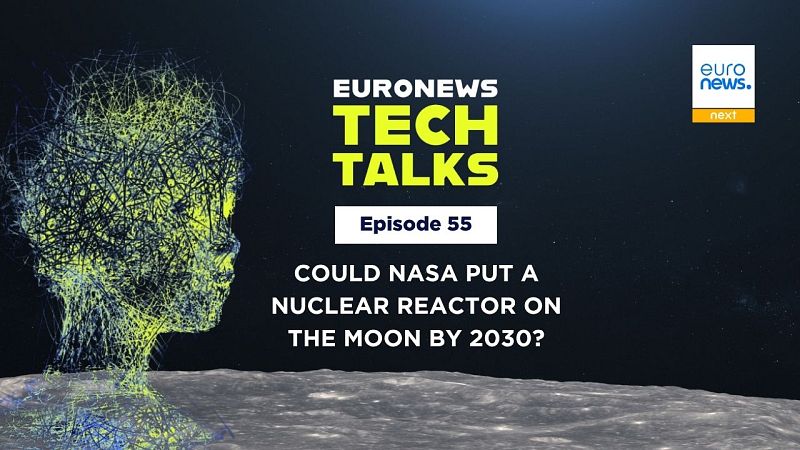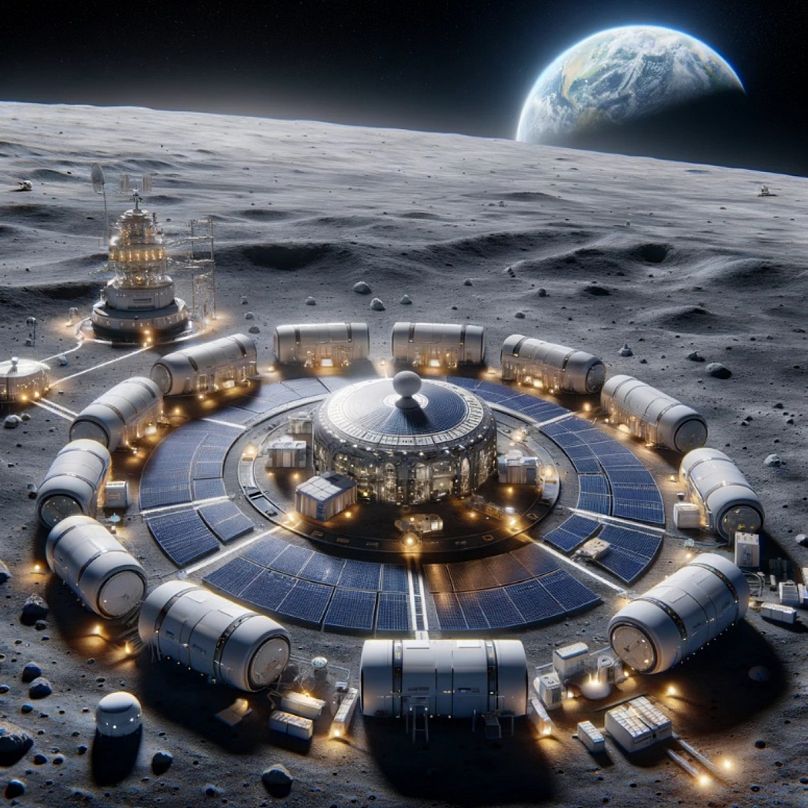Could NASA really put a nuclear reactor on the Moon by 2030? |Euronews Tech Talks

The United States is racing to develop a nuclear reactor on the Moon – but that’s no easy task, and experts disagree over whether the ambitious timeline is possible.
When US space officials said in July that they aimed to launch a nuclear fission reactor on the Moon by 2030, it raised concerns about the safety of having a nuclear reactor on Earth’s satellite. Others questioned why NASA, the American space agency, was speeding up its timeline and what the plans meant for its broader space strategy.
In this episode of Euronews Tech Talks, nuclear energy experts debate the most realistic scenarios for bringing nuclear power to the Moon.
Nuclear energy in space is not a new plan
The idea of bringing nuclear power to space is not new.
Already in 1965, the US launched SNAP-10A, the first nuclear reactor in orbit. It worked for 43 days before shutting down due to a technical problem.
Later, the Apollo missions of the 1960s and 1970s carried radioisotope thermoelectric generators — essentially nuclear batteries — to power lunar exploration.
These projects laid the ground for NASA’s Fission Surface Power Project, which has a specific aim: to support extended exploration of the Moon and Mars — and maybe even sustain a long-term presence there.
Nuclear energy is not the only option, but a promising one
“Nuclear power is dispatchable, you can turn it on and off whenever you like,” Simon Middleburgh, co-director of the Nuclear Futures Institute at the University of Bangor, told Euronews Next.
Middleburgh added that nuclear energy is extremely energy-dense, saying“there’s nothing else that fits that bill for the Moon and beyond”.
Still, nuclear energy is not the only option to power exploration and presence on the Moon. Astrophysicist and space correspondent at IFL Science, Alfredo Carpineti, pointed out that solar panels could also work as long as they’re placed in regions with constant sunlight.
“It could be a combination of solar panels and batteries,” he told Euronews Next. “Or solar panels, batteries and nuclear power”.
2030 is a debatable timeline
Bringing a nuclear reactor to the Moon's surface is no easy task.
Because the Moon has no atmosphere, engineers must find a solution to deal with the heat generated inside the reactor, which on Earth would easily be released into the environment.
The temperature variation on the Moon also poses a technical challenge, as it requires engineers to build a system that can withstand massive temperature swings.
On top of that, the reactor will need to be transported to the Moon and then assembled there with robots, making the entire operation both costly and hard to plan.
Despite these challenges, Middleburgh remains positive about the US’s 2030 timeline: “It is a racy timescale, it is achievable, it just needs sustained effort”.
However, Carpineti disagreed: “The US plan to have it [nuclear reactor] on the Moon in 2030 is completely unrealistic”.
According to Carpineti, the technical challenges are complicated to overcome in just four years, especially considering that a reliable lunar landing system has not yet been developed.
He also argued that NASA’s decision to speed up the development of a nuclear fission reactor is driven by geopolitics.
They’re trying to do something faster than China and Russia,” he said, adding that US President Donald Trump's decision to cut funding to NASA also plays a role: “A lot of science missions are getting cut, but they [the US] still want to be seen that they are doing something, that they are major players”.
What about Europe?
But the US, China, and Russia are not the only countries working on nuclear fission projects on the Moon.
ENEA (the Italian National Agency for New Technologies, Energy and Sustainable Economic Development), together with Thales Alenia Space Italy and the Department of Energy at the Polytechnic University of Milan, is working on Selene, a project funded by the Italian Space Agency to accelerate their own Moon energy programmes.
Part of this project involves designing a nuclear fission reactor on the Moon to produce energy for all kinds of activities on the lunar surface, for example, research activities and planning future trips to Mars.
“These are unique reactors, especially if we compare them to the technologies that are the standard here on Earth,” said Franscesco Lodi, a researcher in ENEA’s nuclear department.
Reactors on the Moon will be much smaller and more compact than those currently operating on Earth. According to Lodi, they will “fit in a room of a standard building”.
This, of course, makes design a critical aspect of the project.
Materials are another major challenge, as they must withstand the Moon’s extreme temperatures for long periods of time.
As Lodi explained, Selene aims to strengthen Italy’s position in the space and energy sectors. However, it will have to work with European partners and other international actors to make this project a reality.





